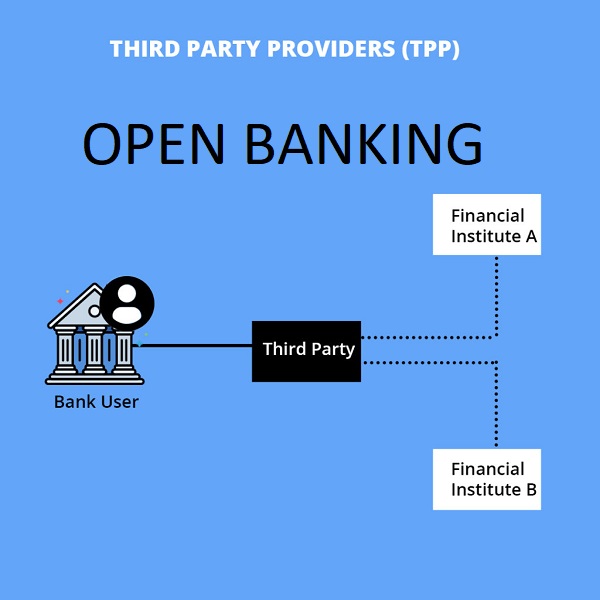The potential for open banking to continue to evolve is immense as the fintech sector relentlessly seeks innovative ways to provide the best possible services to consumers
Open banking has revolutionised the financial industry, providing customers with access to a plethora of new and exciting services that were previously unavailable. This innovative approach allows for the sharing of customer data between banks and third-party providers, which has paved the way for the introduction of fully digitalised financial services by non-traditional financial institutions, such as fintech startups and neobanks.
Having been involved in the fintech and open banking industry for over a decade across Indonesia and Southeast Asia, I have witnessed the remarkable evolution of financial services being provided in the market. It is an exciting time to be part of this dynamic sector.
The recent technological advancements in API platforms have also facilitated even more advanced financial services available, such as universal QR code payments, borderless virtual cards that can be used across currencies, and MSMEs (Micro, Small, and Medium Enterprises) lending that can securely disburse loans without requiring excessive documentation from the borrower.
Moreover, I have observed these advancements have aided in increasing the financial inclusion of previously underbanked and unbanked consumers, granting them access to better funding and financial services that were previously unavailable.
In my opinion, open banking is, and will undoubtedly continue to be, the future of fintech and the financial services it can offer. Here are a few reasons why:
The rapid growth of smartphone and internet users
The proliferation of matured smartphone and internet penetration rates has been a significant driving force behind the continued rise of open banking as the future of fintech. According to Statista, the number of smartphone users has surged by 53 percent from 3.2 billion in 2016 to 6.3 billion in 2021, while global internet users grew from 3.2 billion to 4.9 billion in the same time frame.
Given the expected global population growth to more than 8 billion in 2023, it is estimated that approximately nine in 10 people will be equipped with a smartphone worldwide. Additionally, internet user growth is expected to continue increasing steadily.
The widespread adoption of smartphone applications and the rise of digital literacy have created an environment that facilitates the seamless integration of open banking-based, mobile financial service apps in our daily lives. I believe this trend will continue to move in this direction, inclusive of fintech, neobanks, and other non-traditional financial institutions.
More opportunities to provide more innovative services
Given the widespread use of smartphones and the internet, the stage is set for the development of a digital financial ecosystem. This, followed by the core of open banking that helps facilitate the sharing of financial information between financial institutions and third-party providers through APIs, makes it a promising path for the future of fintech.
It allows for the development of new and innovative services beyond traditional banking, proving to be particularly significant in countries with a large unbanked and underbanked population. For an extended period of time, this population has faced barriers to accessing financial services due to a lack of accessibility and documentation.
In the APAC region, countries such as Indonesia, India, China, Vietnam, and Thailand have demonstrated the potential of open banking-based services in fintech to drive innovation and promote financial inclusion in the last couple of years. According to AppsFlyer, there are 2.7 billion fintech app installs recorded between Q1 2019 and Q1 2021 across APAC, with Indonesia and India being the key contributors.
In particular, e-wallets have emerged as a dominant force in this region, gaining popularity over traditional payment methods like credit cards. Leading players like GoPay, TrueMoney, and GrabPay have enabled users to transact without bank accounts, with wide acceptance by merchants both online and offline.
In my view, as the market continues to demand alternative payment platforms and financial services, open banking’s openness and adaptability offer significant potential for the development of new and unique services that have yet to emerge.
The willingness of traditional financial institutions to collaborate
In recent times, it has become evident that banks and other conventional financial institutions are becoming more receptive to collaborating with fintech companies in developing open banking-led services.
As per a 2022 survey conducted by Economist Impact on behalf of WSO2, more than 48 per cent of the 300 global C-banking suite executives interviewed stated that their financial institutions had embraced partnerships with fintech startups over the past three years, driven by the need to remain competitive and innovative in the market.
Collaboration between banks and fintech is mutually beneficial, where banks have the advantage of consumer trust and brand recognition, while fintech can offer more flexible and innovative financial solutions, as well as more access to the unbanked and underbanked market in developing nations. This partnership can help reach a larger consumer base and create better financial services with higher trust, security, and cost-efficiency in the long run.
In 2022, we engaged in fruitful collaborations with two of Indonesia’s leading banks, Bank BRI and Bank Mandiri. With Bank BRI, we implemented a direct debit solution that empowers BRI’s merchant partners to conveniently collect payments from their customers’ accounts with consent.
Similarly, our partnership with Bank Mandiri enabled the integration of over 300 digital products from more than 1,000 billing companies into their super-app, Livin’. The aim of these collaborations was to promote financial inclusion, enhance the affordability of financial services, and optimise the overall customer experience.
Additionally, another successful example is the German neo-bank N26 and UK-based financial exchange company Wise’s collaboration in 2016, where they teamed up to offer hassle-free international money transfers. They have since extended their partnership in 2020 to include a broader range of transfer options following the rising popularity of international money transfers.
The growth of open banking in the fintech industry has been remarkable in recent years, with increased acceptance from consumers and financial institutions alike. Looking ahead, the potential for open banking to continue to evolve is immense as the fintech sector relentlessly seeks innovative ways to provide the best possible services to consumers.
I believe that secure and transparent sharing of data between parties will remain a top priority in the financial services industry, focusing on convenience and efficiency for an increasingly tech-savvy and financially literate society. Truly excited about the future possibilities that lie ahead!
Source: e27










